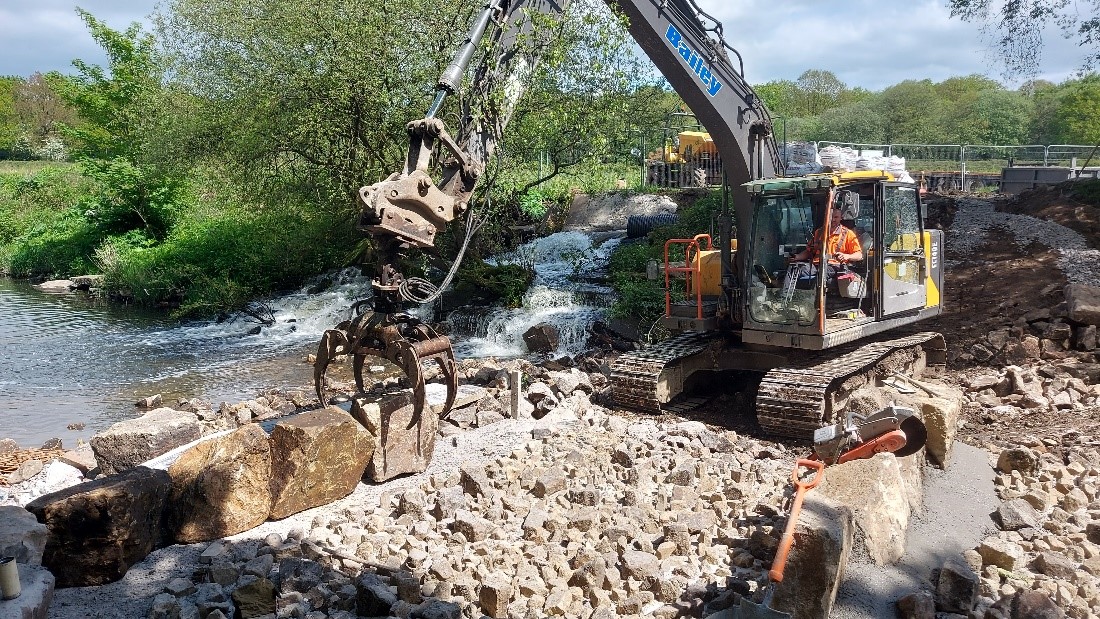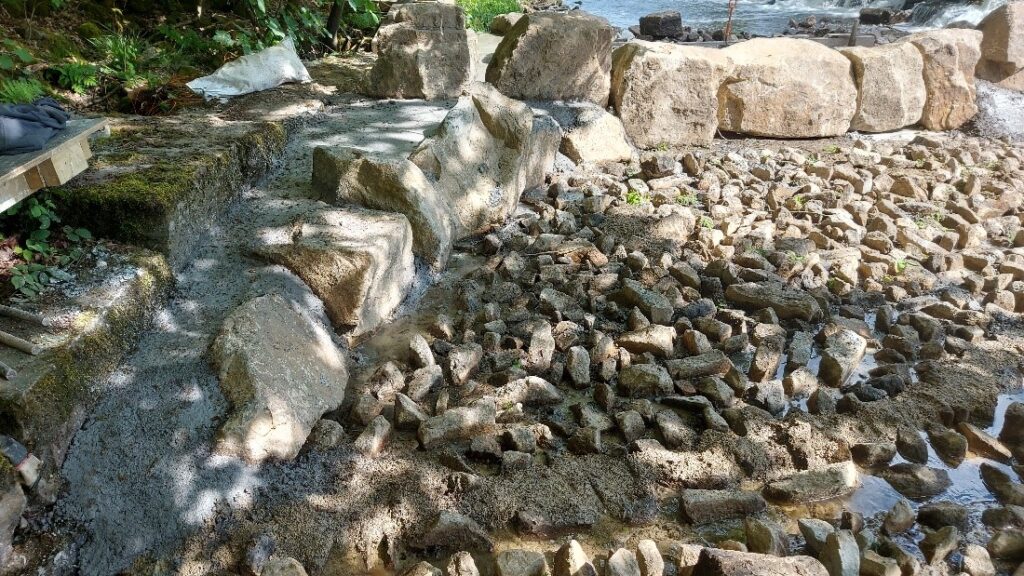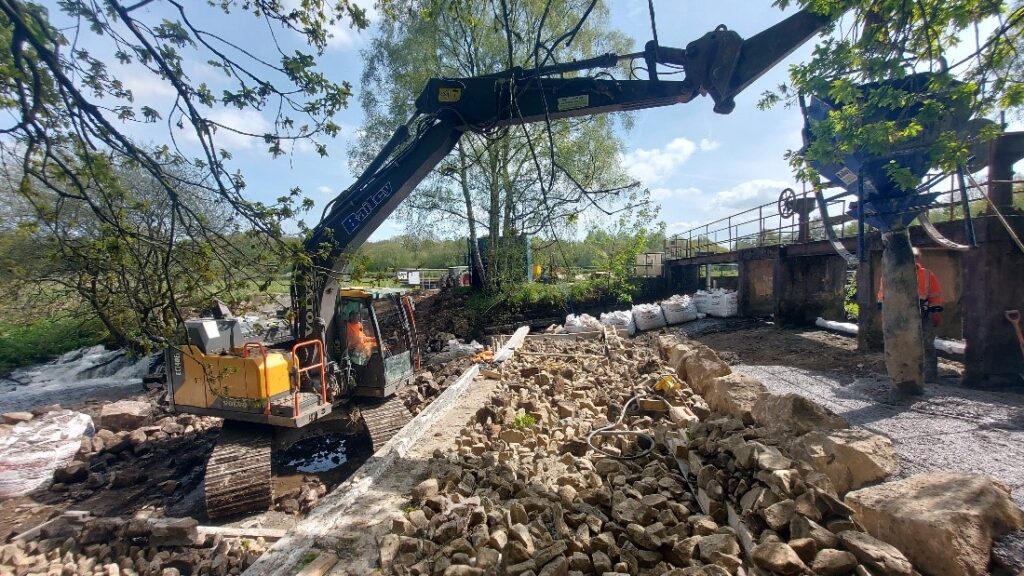
Gathurst Weir Fish Pass
Our work to improve Gathurst weir is underway!
After conducting a study with the Environment Agency, Ribble Rivers Trust are creating a new rock ramp fish pass on the River Douglas at Gathurst weir.
This work will enable migratory fish like Atlantic salmon and brown trout to move around the River Douglas. So, in the future they’ll be able to move to their breeding and feeding grounds with greater ease.
What is a fish pass?

A fish pass, also known as fish ladder, is a structure which helps fish get over artificial river barriers such as weirs or dams.
In this case we’re creating a rock ramp fish pass. This involves modifying the weir’s gradient and, where necessary, strengthening the structure. Our staff or contractors then add rocks and boulders to the structure to create a more natural river bed and ensure sure the water flows in a fish friendly way. These changes mean that fish have a less steep climb up the weir and have places to stop and rest on their journey.
Each of our fish passes is different. But, by providing a series of steps, pools, or ramps, our fish passes allow fish to overcome obstacles that would otherwise prevent their movement.
The work at Gathurst is being carried out as part of the Our Douglas project and is the last in a series of 8 fish passes being constructed.
What is the problem with weirs like Gathurst?
Obstructions like weirs limit fish’s ability to move up and down stream. This movement is vital as they need to reach suitable habitats to live, breed, and feed. When they struggle to do this we see a reduction in fish numbers and biodiversity within rivers. This loss of biodiversity can disrupt the delicate balance of the ecosystem and impact the overall health of the river.
Additionally, the lack of connectivity caused by weirs reduces genetic diversity among fish populations. Genetic diversity is crucial for the long-term survival and adaptability of species. When populations become isolated, they become more susceptible to genetic abnormalities and have a diminished ability to adapt to changing environmental conditions.

Why does Lancashire have so many weirs?
If there’s anything Lancashire has in an abundance it’s rain. The damp climate made it perfect for milling cotton and so, during the Industrial Revolution, thousands of mills sprang up across the county. What’s more, all these mills needed power. That’s where the weirs come into play!
Weirs like the one at Gathurst helped to channel and hold water which was directed into water wheels and transformed into power. Many mills have been repurposed, but the vast majority of the weirs are now unused, unmaintained, and making our rivers impassable. In fact, it’s we estimate that we have well over a thousand known barriers in the catchment. However, the number is likely to be even higher than we’re estimating as many are under culverts or on private land.

